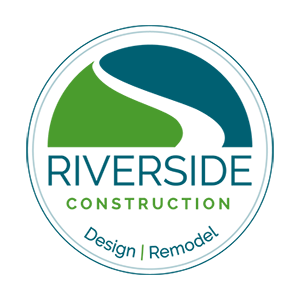How to Select the Best Flooring For Your Home Workout Room
/0 Comments/in blog, Home Design/by Riverside ConstructionThe decision to install a home gym can be life-changing in any number of ways, but it also involves a lot of decision-making. The physical location of your personal workout space will influence its actual square footage as well as the floor plan, layout, and specific finishing materials. Basement gyms, for instance, might accommodate heavier fitness equipment, but can also present a logistical challenge for installing large equipment. A yoga studio, on the other hand, might occupy only a sliver of space in a seldom-used second-floor guest room.
In addition to basic decisions about space and use, you will want to consider privacy, convenience, and finishing materials.
One of the primary considerations for any gym is the flooring type that will best suit your needs. Fitness flooring varies, and your decision must suit not only your particular needs but also your room décor or design style and your budget.
No matter what your exercise preferences might be — from Zumba to incline walkers or rowing machines, some common flooring choices are carpet, foam, vinyl, and rubber. Here’s how to evaluate the pros and cons of each:
Carpet
Carpet tiles are used in both commercial fitness facilities and home gyms. Commercial grade, low-pile carpet is soft, resilient, and comfortable underfoot, all pluses for a workout room. Carpet absorbs some sound and is as suitable for yoga and karate routines as it is for exercise machines. Carpet provides a non-slip surface and offers some insulation against cold or extreme heat. Carpet tiles, which are easy to install, may also be easily replaced if they become damaged or stained.
Overall, carpet is durable, versatile, cost-efficient, child-friendly and easy to care for. It is available in a wide range of colors, and individual carpet tiles can be mixed to create a custom design or to designate specific exercise zones.
On the minus side, however, carpet is not water-resistant. It is subject to mold and mildew if used in a damp area, and can harbor pests and insects. Carpet also is more difficult to clean than other flooring types. Wall-to-wall carpet may stretch over time, unless it is a glue-down variety, and may require professional re-stretching.
Foam
Foam is a popular and playful choice for family-oriented exercise. Available in bright colors and sometimes sold as interlocking “puzzle pieces,” foam is comfortable, cushioning and extremely lightweight. A foam pad, or blanket, is a highly functional and economical alternative in a part-time workout room. Because foam is so flexible and absorbs the impact of physical activity, it is a good choice for a stationary bicycle, a lightweight rowing machine, or for strenuous movement, including jogging in place or punching bag workouts.
It is soft and resilient for floor stretches, and for all age groups. In addition, foam allows the greatest creative flexibility for color and pattern.
The only reported downside to foam is that it is not usually considered the best option for extremely heavy exercise equipment. If plans for your gym include weight benches, elliptical machines, or heavy treadmills, another type of floor might be more durable.
Vinyl
Modern vinyl is as functional for a workout room as it is for a utility room or child’s bathroom: It’s easy to clean, resists mold and mildew, will withstand heavy use and some abuse. This category of resilient flooring comes in an array of products including planks, sheets, and tiles, and allows extensive customization through color and pattern. Vinyl is flexible, easy to install with minimum preparation, and can be used directly over a slab, as well as over sub-flooring or an older wood floor.
High-quality vinyl will be durable, while low-quality material will be susceptible to rips and tears. Unfortunately, vinyl flooring cannot be refinished, so when it is damaged it needs to be removed and replaced. This is easier in a tile and plank installation than with sheet materials.
Vinyl flooring is also offered in three different types of wear surfaces, offering a full range of protection against scuffs and stains—from entry-level (Vinyl No-Wax) to Urethane and Enhanced Urethane, which offers the most protection.
Finally, a vinyl floor is only minimally shock resistant. Over concrete, as in a garage or basement, it will still be hard, and perhaps cold during the winter.
Rubber
A fourth popular option for a home gym is rubber flooring, with all the best qualities of a flexible and easy-to-care-for floor and few of the disadvantages. It is available in rolls or tiles, is comfortable, shock resistant, durable, and easy to keep clean. While economical color options are limited, it is extremely practical. If used as area matting or a temporary surface, it can be moved and stored easily. Rubber does not absorb odors, is anti-microbial, and will not be damaged by water.
However, like vinyl, rubber has little insulating quality and will be colder in the winter than carpet or foam.
Ready to Design Your Workout Space?
When you’re ready to move forward with your plans for a home workout space, Riverside Construction can not only help you decide which type of gym flooring will best suit you, but we can help you design and build a space that fits your needs exactly, fit to your budget, timeline, and lifestyle. Start a Conversation about your home workout space today.
Blog Categories
- Basement
- Basement Remodeling
- Bathroom
- Bathroom Remodeling
- blog
- Customer Stories
- Design/Build Construction
- Exterior Remodel
- Garage
- Green Remodeling
- Home Design
- Home improvement
- Home Office
- Home Remodeling
- Kitchen
- Kitchen Remodeling
- News
- Personal
- Remodeling Design
- Riverside Construction News
- Room Additions
- Safety Items
- Seminars
- Uncategorized
Business Info
127 Farabee Dr. N.
Lafayette, Indiana 47905
765.838.1644
Hours: M-F, 8am to 5pm
Serving Tippecanoe County and the surrounding areas of Lafayette and West Lafayette, Indiana.



